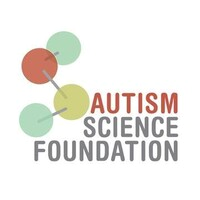The Allure and Risks of MERT: A Closer Look at Magnetic Therapy for Autism
September 15, 2024, 9:44 am
Parthenon Computing
Location: United Kingdom, England, Oxford

Location: United States, California, El Segundo
Employees: 1001-5000
Founded date: 1881
In the quest for answers, parents often find themselves at a crossroads. The journey is fraught with hope, desperation, and sometimes, heartbreak. For many families with autistic children, the search for effective treatments can feel like navigating a labyrinth. One of the latest paths being explored is Magnetic E-Resonance Therapy (MERT). Promoted as a beacon of hope, MERT claims to improve communication and social skills in children with autism. But does it deliver on its promises?
MERT is a form of transcranial magnetic stimulation (TMS), a therapy initially developed for conditions like depression and PTSD. The therapy uses magnetic fields to stimulate nerve cells in the brain. It sounds promising, but the evidence supporting its efficacy for autism is shaky at best. The therapy's allure lies in its potential to unlock communication in non-verbal or minimally verbal children. Parents, driven by love and urgency, often find themselves willing to invest significant sums—up to $12,000—for a chance at progress.
The rise in autism diagnoses has led to a surge in alternative therapies. As awareness grows, so does the pressure on parents. The ticking clock of developmental milestones looms large. Parents hear the whispers: “You must act now.” In this climate, MERT has emerged as a popular option, marketed as a “safe and effective treatment.” But behind the glossy brochures and confident claims lies a murky pool of anecdotal evidence and unverified studies.
Many parents report positive changes after MERT. They share stories of improved eye contact, better sleep, and enhanced communication. Yet, these testimonials are not the whole story. Others report minimal to no changes, and some even experience regressions. The lack of rigorous scientific data makes it impossible to discern whether these outcomes are typical or mere outliers.
Wave Neuroscience, the company behind MERT, has not conducted large-scale studies to validate its claims for autism. Instead, it relies on small, unpublished studies and anecdotal evidence. This raises a red flag. In the medical community, the phrase “the plural of anecdote is not data” rings true. Personal stories can be compelling, but they do not replace the need for robust scientific research.
The marketing of MERT often cites a study from the Newport Brain Research Laboratory, which claimed significant improvements in communication and eye contact among participants. However, this study has not undergone peer review, and its methodology is questionable. Critics point out that many patients were excluded from the analysis, skewing the results. The remaining participants were also receiving other therapies, making it difficult to attribute improvements solely to MERT.
Parents are left in a difficult position. They want to believe in the possibility of a breakthrough. The emotional weight of a child’s future can cloud judgment. Crowdfunding campaigns and personal savings are often tapped to finance these treatments. For some, the potential benefits outweigh the financial risks. But the question remains: what is the true cost of hope?
Experts caution against the widespread adoption of MERT without solid evidence. The hierarchy of medical evidence places randomized controlled trials at the top. These trials are designed to eliminate bias and provide clear conclusions about a treatment's efficacy. Unfortunately, the current body of research on MERT and autism lacks this level of rigor. Most studies are small, observational, or lack control groups, making it impossible to draw definitive conclusions.
The medical community is not entirely dismissive of MERT. Some clinicians believe that TMS could hold promise for various conditions, including autism. However, they emphasize the need for more research. Without comprehensive studies, it is premature to recommend MERT as a standard treatment for autism.
Parents are urged to approach MERT with caution. It is essential to evaluate the research critically. The allure of a quick fix can be tempting, but families must navigate the landscape of treatments with a discerning eye. They should seek out credible sources and demand transparency from providers.
As the conversation around autism treatment evolves, so too does the responsibility of parents. They must balance hope with skepticism. The journey to find effective therapies is often long and winding. MERT may be one of many paths, but it is crucial to tread carefully.
In the end, the quest for understanding and support for autistic children continues. The desire for progress is universal, but it must be grounded in evidence. Families deserve treatments that are not only hopeful but also scientifically validated. Until then, the search for answers remains a complex and emotional journey, one that requires both courage and caution.
In this landscape of uncertainty, the mantra should be clear: informed choices lead to better outcomes. Parents must advocate for their children, demanding rigorous research and accountability from those who offer treatments. The stakes are high, and the journey is personal. The road ahead may be fraught with challenges, but with careful navigation, families can find their way through the maze of autism therapies.
MERT is a form of transcranial magnetic stimulation (TMS), a therapy initially developed for conditions like depression and PTSD. The therapy uses magnetic fields to stimulate nerve cells in the brain. It sounds promising, but the evidence supporting its efficacy for autism is shaky at best. The therapy's allure lies in its potential to unlock communication in non-verbal or minimally verbal children. Parents, driven by love and urgency, often find themselves willing to invest significant sums—up to $12,000—for a chance at progress.
The rise in autism diagnoses has led to a surge in alternative therapies. As awareness grows, so does the pressure on parents. The ticking clock of developmental milestones looms large. Parents hear the whispers: “You must act now.” In this climate, MERT has emerged as a popular option, marketed as a “safe and effective treatment.” But behind the glossy brochures and confident claims lies a murky pool of anecdotal evidence and unverified studies.
Many parents report positive changes after MERT. They share stories of improved eye contact, better sleep, and enhanced communication. Yet, these testimonials are not the whole story. Others report minimal to no changes, and some even experience regressions. The lack of rigorous scientific data makes it impossible to discern whether these outcomes are typical or mere outliers.
Wave Neuroscience, the company behind MERT, has not conducted large-scale studies to validate its claims for autism. Instead, it relies on small, unpublished studies and anecdotal evidence. This raises a red flag. In the medical community, the phrase “the plural of anecdote is not data” rings true. Personal stories can be compelling, but they do not replace the need for robust scientific research.
The marketing of MERT often cites a study from the Newport Brain Research Laboratory, which claimed significant improvements in communication and eye contact among participants. However, this study has not undergone peer review, and its methodology is questionable. Critics point out that many patients were excluded from the analysis, skewing the results. The remaining participants were also receiving other therapies, making it difficult to attribute improvements solely to MERT.
Parents are left in a difficult position. They want to believe in the possibility of a breakthrough. The emotional weight of a child’s future can cloud judgment. Crowdfunding campaigns and personal savings are often tapped to finance these treatments. For some, the potential benefits outweigh the financial risks. But the question remains: what is the true cost of hope?
Experts caution against the widespread adoption of MERT without solid evidence. The hierarchy of medical evidence places randomized controlled trials at the top. These trials are designed to eliminate bias and provide clear conclusions about a treatment's efficacy. Unfortunately, the current body of research on MERT and autism lacks this level of rigor. Most studies are small, observational, or lack control groups, making it impossible to draw definitive conclusions.
The medical community is not entirely dismissive of MERT. Some clinicians believe that TMS could hold promise for various conditions, including autism. However, they emphasize the need for more research. Without comprehensive studies, it is premature to recommend MERT as a standard treatment for autism.
Parents are urged to approach MERT with caution. It is essential to evaluate the research critically. The allure of a quick fix can be tempting, but families must navigate the landscape of treatments with a discerning eye. They should seek out credible sources and demand transparency from providers.
As the conversation around autism treatment evolves, so too does the responsibility of parents. They must balance hope with skepticism. The journey to find effective therapies is often long and winding. MERT may be one of many paths, but it is crucial to tread carefully.
In the end, the quest for understanding and support for autistic children continues. The desire for progress is universal, but it must be grounded in evidence. Families deserve treatments that are not only hopeful but also scientifically validated. Until then, the search for answers remains a complex and emotional journey, one that requires both courage and caution.
In this landscape of uncertainty, the mantra should be clear: informed choices lead to better outcomes. Parents must advocate for their children, demanding rigorous research and accountability from those who offer treatments. The stakes are high, and the journey is personal. The road ahead may be fraught with challenges, but with careful navigation, families can find their way through the maze of autism therapies.

